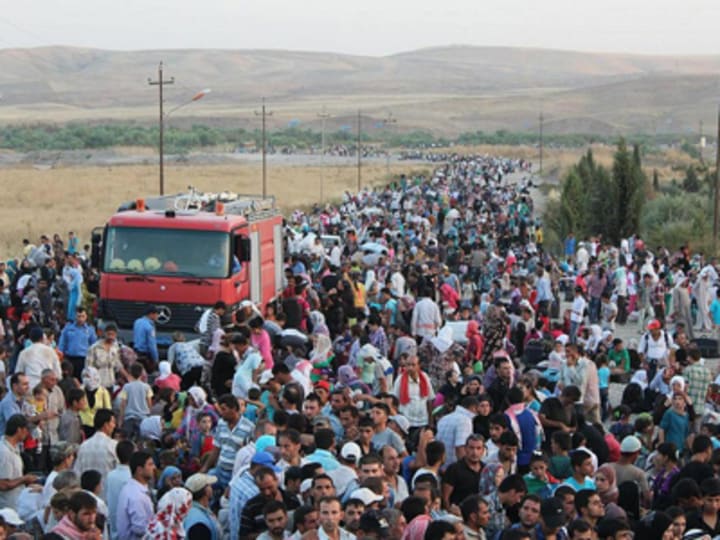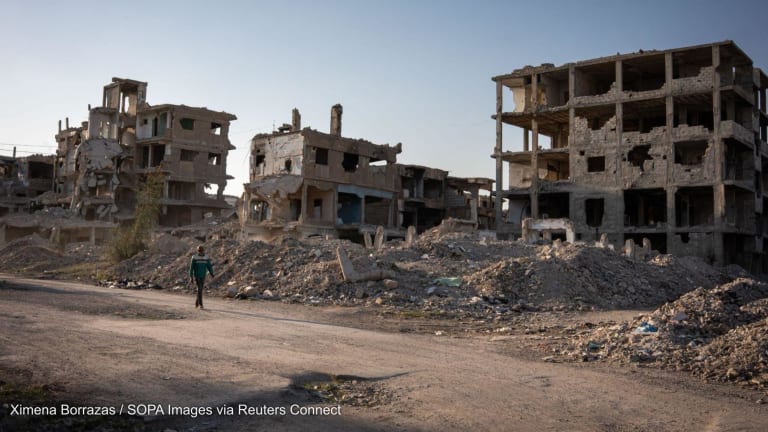
The Syrian refugee crisis has produced a strong competition in terms of where the money will go, and for which host countries.
Devex previously reported about the case of refugees and the urban populations in Jordan and Lebanon, where aid groups have been voicing the need for donors to step up their assistance and include host communities in their activities and allocations.
Now, humanitarians in Iraq are doing the same, but it seems not to be getting enough support - and attention - from the international community.
Indeed, of the U.N.’s $2.98 billion appeal for Syrian refugees revised last June, only $310.8 million or 10.43 percent was allocated for Iraq. And of that amount, only $57 million has been received to date, said Alexandra Brosnan, advocacy officer for the International Rescue Committee.
This pales in comparison to the amounts approved for Jordan ($976.57 million) and Lebanon ($1.2 billion), not including both states’ separate requests of $380.7 million and $449.63 million, respectively - although that is not surprising given the number of refugees in both countries, now over half a million each.
Iraq however is now seeing a growing refugee population, and aid groups are already “scrambling to make sure we provide critical services to refugees fleeing out Syria,” explained IRC country director Emily Dakin.
Catching up
Aid groups themselves did not anticipate the surge in Syrian refugees in Iraq. In fact, in 2012, refugee projections for Iraq by end of June 2013 was only at 90,000 people.
“I think what happened was the influx of refugees ballooned later and slower,” Brosnan offered as an explanation why perhaps other countries are getting more support.
But today, aid groups note the numbers are closely approaching 200,000, which includes some 30,000 Syrians who arrived recently following the Kurdistan Regional Government’s decision last week to reopen its borders after closing it in May.
But this is not the only issue concerning refugees.
Dakin said the KRG has been “very generous” in allowing Syrian Kurds to work in the country. But many of them are getting paid less than Iraqis doing the same work, and many young kids are forced to do labor work, such as in factories.
“So while they have been very generous, there’s also need for more significant support to ensure that exploitation doesn’t become prominent and that there are fair labor practices occuring,” she explained.
“This refugee population are in need as any other refugee population in another country.”
Strategy in limbo
It’s not only funding though that appears to not be flowing regularly enough to Iraq. The humanitarian community is increasingly getting frustrated with what Dakin calls a “lack of strategy.”
Aid groups have yet to come up with an inclusive strategy for the now 100,000 Syrian urban refugees in Iraq, who need a coherent and robust response.
Dakin said the IRC has been pushing UNHCR to finalize the urban strategy, but to no avail yet.
“There has been attempts to form the strategy, but often it’s just unclear where the priorities are,” she said, adding that has been causing frustration for many organizations.
The strategy is expected to guide all stakeholders’ response in the crisis, from donors to humanitarian organizations working on the ground.
Unsurprisingly, this coordination problem is not unique to the Syria response in Iraq, and for instance Lebanon shares this concern.
Two crises
The influx of Syrian refugees is not the only crisis aid groups are handling in Iraq. There remains more than 1 million internationally displaced people in the country, which is now growing with the return of many Iraqi refugees.
But aid groups argue donor funding has been decreasing in the past few years, and some donor organizations have even pulled out.
The U.K. Department for International Development ended its bilateral development program with Iraq in 2012, although some support from the institution continues to flow via its contributions to multilateral organizations such as the World Bank, as the Foreign Commonwealth Office’s conflict pool program and the Arab Partnership initiative.
Dakin argues this could be due to Iraq now being considered a middle-income country with “very significant oil revenues.”
But Iraq is still very much a fragile state. And the needs remain huge, with close to 7 million Iraqis still living close to the poverty line and with the unemployment rate double the national average of 15 percent, according to the United Nations.
Dakin said: “Donor organizations must realize that Iraq cannot be overshadowed. We need to have the same kind of supplies, financial resources, to be able to respond, as well as the Iraqi government, so it can respond adequately to the population.”
Read more development aid news online, and subscribe to The Development Newswire to receive top international development headlines from the world’s leading donors, news sources and opinion leaders — emailed to you FREE every business day.




